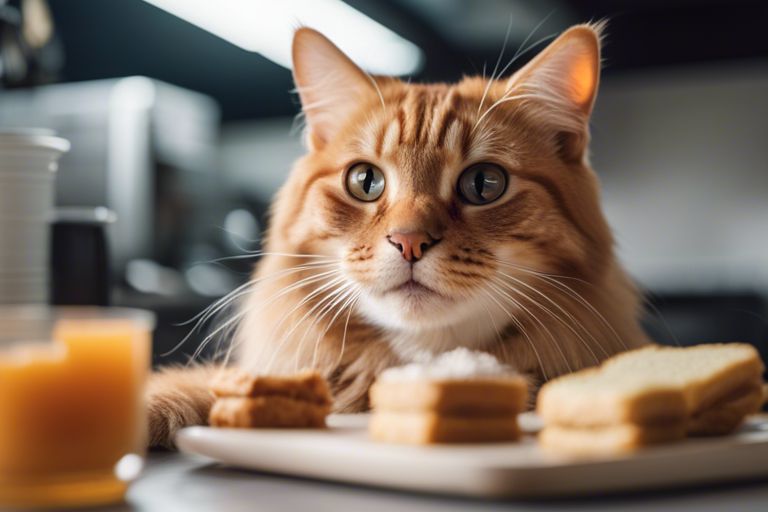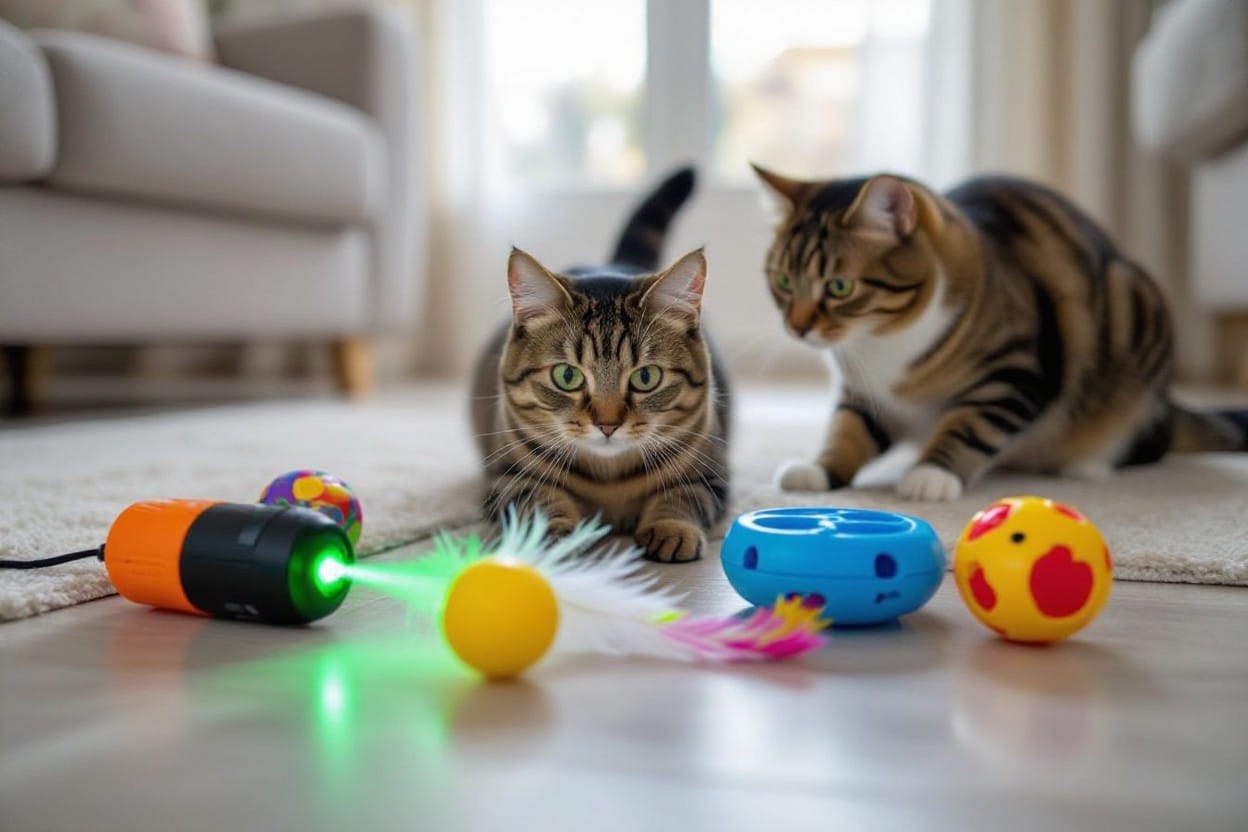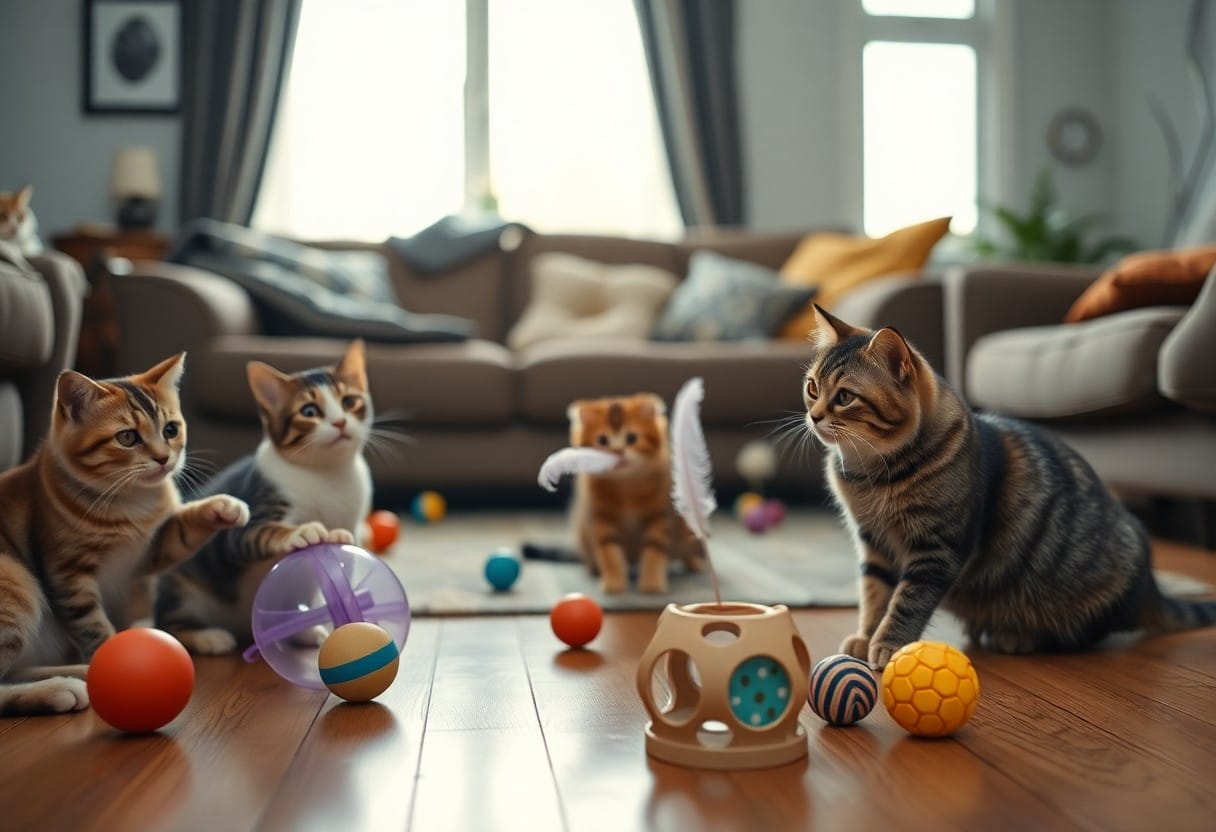Just like humans, cats also enjoy treats as a special reward or snack. However, it’s important to be mindful of what and how much you are feeding your feline friend. When considering giving treats to your cat, there are certain dos and don’ts that every cat owner should keep in mind to ensure their pet’s health and well-being.
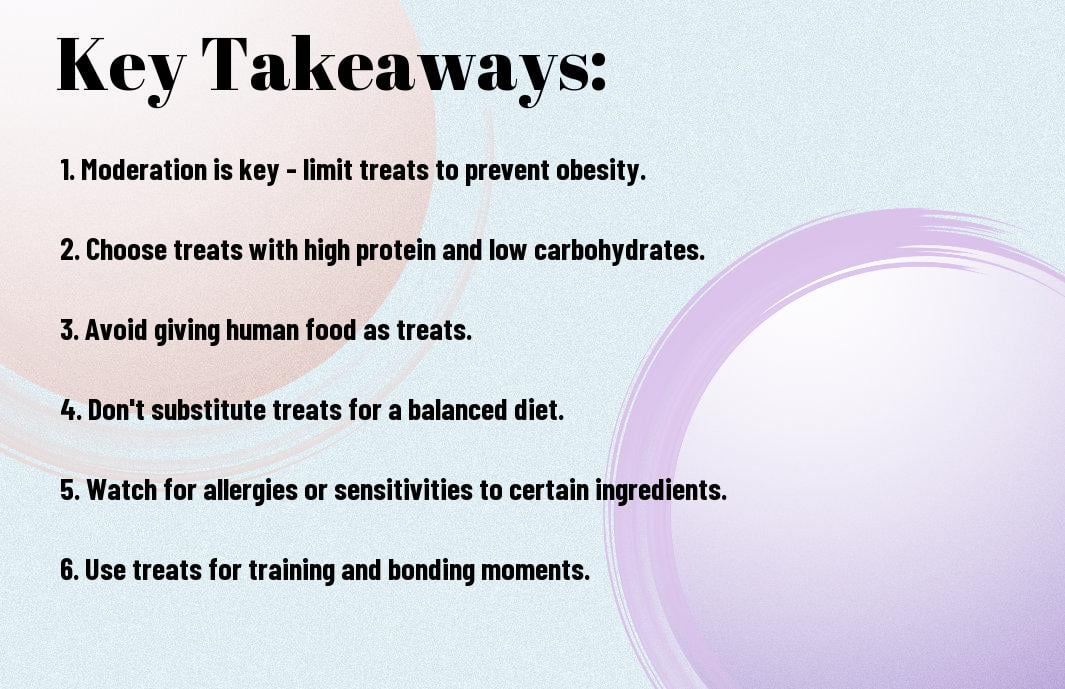
Understanding Cat Nutrition Basics
Some key elements to consider when it comes to understanding cat nutrition are macronutrients – proteins, fats, and carbohydrates, as well as vitamins and minerals. These are important components of a cat’s diet that provide the necessary nutrients for their overall health and well-being.
Macronutrients: Proteins, Fats, and Carbs
Basics: Proteins are vital for cats as they are necessary for the growth and repair of body tissues. Cats are obligate carnivores, meaning they require a diet high in animal-based proteins. Fats are a concentrated source of energy that also provide important fatty acids important for skin and coat health. Carbohydrates, while not as crucial for cats as they are for humans, can still provide a source of energy in their diet.
Vitamins and Minerals: The Essentials
Proteins: In addition to macronutrients, vitamins and minerals are also vital for maintaining a cat’s health. These important nutrients play various roles in maintaining the immune system, bone health, and overall function of the body. Cats require specific vitamins like vitamin A, D, and E, as well as minerals such as calcium, phosphorus, and potassium to support their physiological functions.
Understanding the basics of cat nutrition, including macronutrients and important vitamins and minerals, is crucial for providing a well-balanced diet for your feline friend. By ensuring they receive the right nutrients in the right amounts, you can help support their overall health and longevity.
The Role of Treats in Cat Behavior
It is important to understand the role that treats play in shaping your cat’s behavior. Treats can be powerful tools for positive reinforcement, training, and bonding with your feline friend.
Positive Reinforcement and Training
On the topic of positive reinforcement and training, treats can be used to reward good behavior and encourage learning. When your cat performs a desired behavior, such as using a scratching post instead of furniture, giving them a tasty treat immediately can reinforce that behavior. This creates a positive association in your cat’s mind and helps them understand what is expected of them.
The Balance Between Treats and Meals
The key is to strike a balance between giving treats and ensuring your cat’s main meals provide all the important nutrients they need. While treats can be a fun way to interact with your cat and strengthen your bond, they should not make up a large portion of their daily caloric intake. It’s important to consider the nutritional content of the treats you choose and factor that into your cat’s overall diet.
This balance is crucial to prevent weight gain and maintain your cat’s health. Always consult with your veterinarian to determine the right amount of treats to give your cat based on their age, weight, and dietary needs.
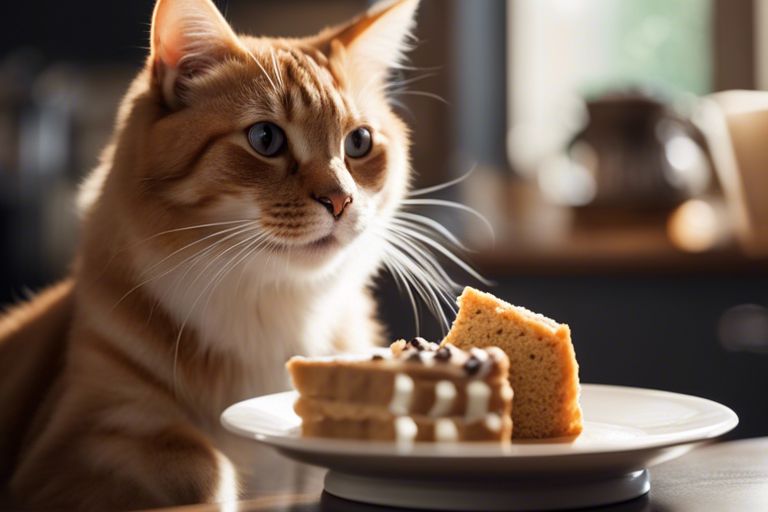
Types of Cat Treats
Many cat owners love to spoil their feline friends with treats, but it’s important to choose the right ones for your cat’s health. There are various types of cat treats available on the market, each with its own set of pros and cons. Recognizing the differences between these treats can help you make an informed decision when selecting the best options for your furry companion.
| Commercial Treats: | Homemade Treats: |
| Convenient | Customizable |
| Diverse flavors | Fresh ingredients |
| Can be high in additives | Require more time to prepare |
| Long shelf life | May not have preservatives |
| Readily available | May be more cost-effective |
Commercial Treats: Pros and Cons
| Pros | Cons |
| Convenient | Can be high in additives |
| Diverse flavors | May contain artificial ingredients |
| Long shelf life | Can be expensive |
| Readily available | May not be suitable for cats with dietary restrictions |
| Specific formulations for dental health or hairball control | May contribute to weight gain if overfed |
Homemade Treats: Nutritious Alternatives
Treats made at home can offer a nutritious alternative to commercial options. By using fresh ingredients and controlling the recipe, you can ensure that your cat is getting a wholesome snack. Homemade treats also allow you to cater to any dietary restrictions or preferences your cat may have.
Special Diet Treats: Hypoallergenic and Medical Options
It’s vital to consult with your veterinarian before introducing special diet treats to your cat’s regimen. These treats are specifically formulated to address various health concerns such as allergies, urinary tract issues, or weight management. Special diet treats can be a valuable addition to your cat’s overall wellness plan when used under professional guidance.
The Dos of Feeding Your Cat Treats
Limit Treats to 10% of Daily Caloric Intake
After regular meals, it can be tempting to give your cat treats throughout the day. However, it is important to remember that treats should not make up more than 10% of your cat’s daily caloric intake. Excessive treats can lead to obesity and other health issues in the long run.
As a responsible pet owner, it’s crucial to monitor how many treats your cat is consuming and adjust their regular meals accordingly. By limiting treats to a small portion of their daily calories, you can ensure that your cat maintains a healthy weight and diet.
Choose High-quality Ingredient Treats
Treats made with high-quality ingredients are not only more nutritious for your cat but also help prevent potential health problems. Look for treats that list meat as the first ingredient and avoid those with fillers, artificial colors, and preservatives. Opting for treats made with natural ingredients can help support your cat’s overall well-being.
Your cat’s digestive system may also benefit from treats that contain limited ingredients and are free from potential allergens. By choosing high-quality ingredient treats, you can provide your cat with a tasty reward that is also beneficial for their health.
Offer Treats During Interactive Play
Caloric intake should be considered when offering treats to your cat, especially during playtime. Treats can be a great motivator during interactive play sessions, as they can help reinforce positive behaviors and strengthen the bond between you and your feline companion. By incorporating treats into playtime, you can provide mental stimulation and physical exercise for your cat.
Daily play sessions with treats can also help prevent boredom and reduce anxiety in your cat. By offering treats during interactive play, you can create a fun and engaging environment that promotes your cat’s overall well-being.
The Don’ts of Feeding Your Cat Treats
Despite your cat’s pleading eyes and cute meows, it’s important to remember that not all treats are suitable for your feline friend. Here are some vital don’ts when it comes to feeding your cat treats.
Avoid Human Foods That Are Toxic to Cats
Treats that are safe for human consumption may not be safe for your cat. Some human foods like onions, garlic, chocolate, grapes, and raisins can be toxic to cats and may lead to serious health issues. It is crucial to familiarize yourself with a list of foods that are harmful to cats and ensure they are never given as treats.
Steer Clear of High-Fat, High-Sugar Treats
For cats, excess fat and sugar can lead to obesity, diabetes, and other health problems. Avoid giving your cat treats that are high in fat or sugar, such as certain types of commercial treats, as they can contribute to weight gain and digestive issues. Opt for healthier, low-calorie treats specifically designed for feline consumption.
For the best overall health, choose treats that are specially formulated for cats and approved by veterinarians. Such treats will not only be delicious for your feline friend but also provide vital nutrients to support your cat’s well-being.
Do Not Replace Main Meals with Treats
Toxic as it may be, replacing your cat’s main meals with treats is a big no-no. Treats should only be given occasionally and in moderation, as they are not nutritionally balanced to meet all of your cat’s dietary needs. Regularly feeding your cat treats instead of their regular meals can lead to malnutrition and health complications.
The main focus of your cat’s diet should be a high-quality, balanced cat food that meets all their nutritional requirements. Treats should be viewed as extras, not substitutions, in your cat’s diet to maintain a healthy and happy pet.
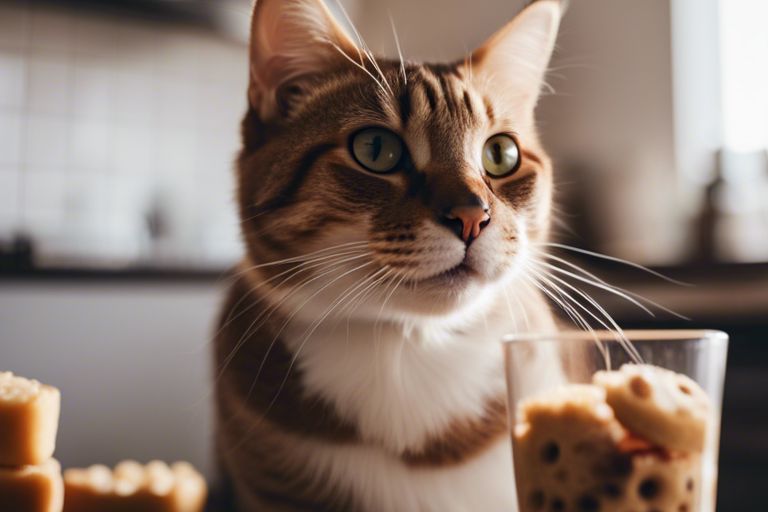
Monitoring Your Cat’s Health and Treat Consumption
Understanding the Signs of Overfeeding
Overfeeding your cat treats can lead to various health issues such as obesity, dental problems, and digestive issues. It is crucial to monitor your cat’s weight and overall health to ensure that they are not being overfed. Signs of overfeeding can include weight gain, lethargy, vomiting, and changes in bathroom habits. If you notice any of these signs, it is crucial to cut back on the treats and consult with your veterinarian to develop a healthier feeding plan.
Adjusting Treat Intake Based on Weight and Activity
Based on your cat’s weight and activity level, you may need to adjust their treat intake accordingly. If your cat is overweight or less active, it is important to limit their treat consumption to prevent further weight gain. On the other hand, if your cat is underweight or very active, you may be able to offer them treats in moderation without negative consequences. Always consider your cat’s individual needs and consult with your veterinarian to determine the appropriate treat allowance for your feline friend.
Activity levels play a significant role in determining how many treats your cat can enjoy without affecting their overall health. Cats that are more active may burn off treat calories more efficiently, allowing them to indulge a bit more without adverse effects. However, for less active cats, it is crucial to be mindful of treat portions to avoid excess weight gain. By paying attention to your cat’s activity level and adjusting their treat intake accordingly, you can help maintain their health and well-being.
Summing up
The dos and don’ts of feeding your cat treats are important guidelines to ensure your feline friend maintains a healthy diet and weight. By incorporating treats strategically as rewards, monitoring portion sizes, and choosing high-quality options, you can keep your cat happy and healthy.
Bear in mind, treats should complement your cat’s regular meals, not replace them. Being mindful of the ingredients and portion sizes will help prevent obesity and other health issues. With these dos and don’ts in mind, you can establish a balanced treat routine that benefits your cat’s overall well-being.
FAQ
Q: Why is it important to be cautious when feeding my cat treats?
A: It is important to be cautious when feeding your cat treats because overindulging can lead to obesity and other health issues. Treats should only make up a small portion of your cat’s overall diet.
Q: What are some safe ingredients to look for in cat treats?
A: Look for cat treats that are made with high-quality protein sources such as chicken or fish. Avoid treats that contain fillers, artificial colors, and preservatives.
Q: How many treats should I feed my cat each day?
A: Treats should only make up about 10% of your cat’s daily caloric intake. Depending on the size and activity level of your cat, this could range from 1-5 treats per day.
Q: Are there any treats I should avoid giving to my cat?
A: Yes, avoid giving your cat treats that are meant for other animals, such as dogs, as they may contain ingredients that are harmful to cats. Also, avoid giving your cat treats that are high in fat, sugar, or salt.
Q: How can I use treats to train my cat?
A: You can use treats to train your cat by rewarding them immediately after they exhibit a desired behavior. This positive reinforcement will help encourage good behavior in your cat. Just be sure to use treats in moderation and not as a substitute for a balanced diet.
